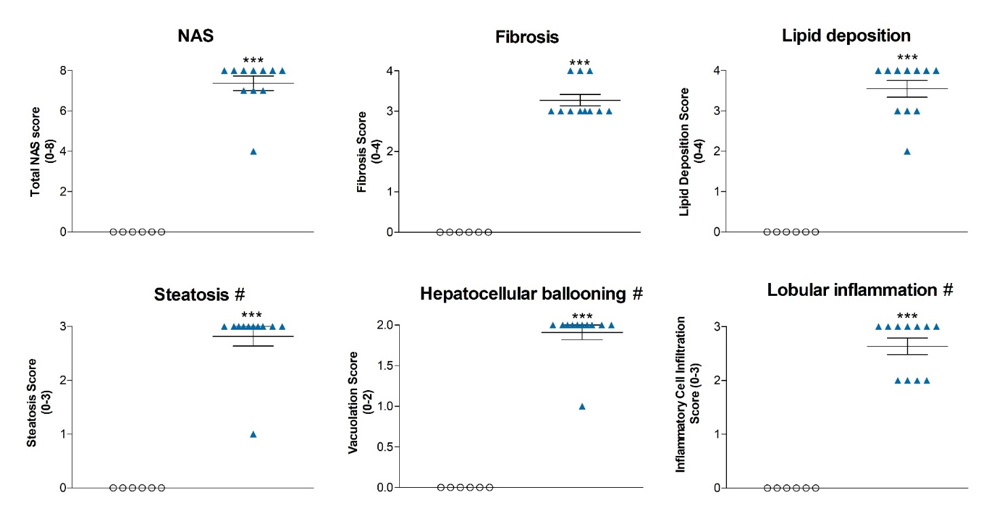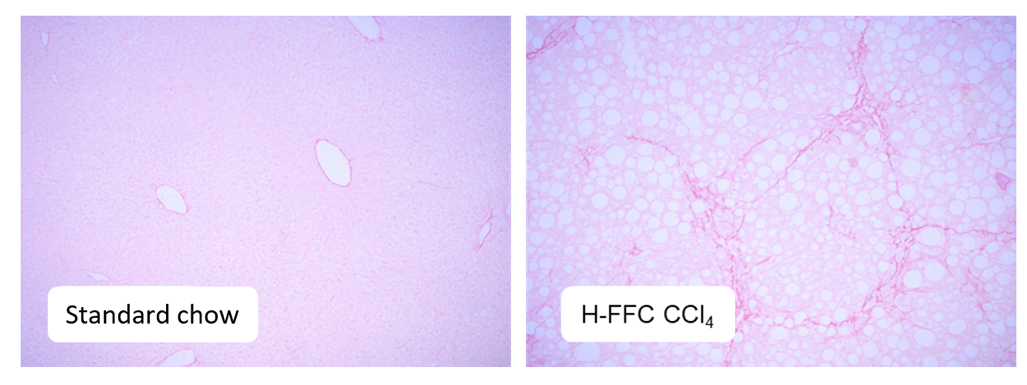H-FFC CCl4 model of severe fibrosis and NASH
Non-alcoholic fatty liver disease (NAFLD) is a complex spectrum of liver diseases ranging from simple hepatic steatosis through to non-alcoholic steatohepatitis (NASH) which can ultimately lead to end-stage liver disease. Patients with NASH who develop fibrotic lesions in the liver have an increased risk of progression to the later stages of liver disease. Due to the risk factors associated with the combination of NASH and fibrosis, therapies which reduce fibrosis alongside NASH are a key target for drug development.
At Sygnature Discovery we have developed a model of NASH and severe fibrosis to enable potential anti-NASH and anti-fibrosis therapies to be assessed in a severe phenotype.
The H-FFC Cl4 mouse develops severe NASH with bridging fibrosis within 12 weeks
- Mice are maintained on a diet high in fat, fructose and cholesterol (H-FFC) and dosed with CCl4for 12 weeks
- The H-FFC CCl4mouse develops all the clinical histological endpoints associated with NASH including bridging fibrosis
- Liver bioanalysis confirms the histological findings
- Plasma ALT is significantly increased
The H-FFC CCl4 mouse develops severe NASH and bridging fibrosis

Histopathology scoring of standard chow and H-FFC CCl4 mice. Data are presented as individual animal scores and means ± SEM.
Significant differences versus the standard chow vehicle group are denoted by ***p<0.001. The NAFLD activity score (NAS) was calculated by combining the scores for # parameters.
Bridging fibrosis develops in the H-FFC CCl4 mouse model of NASH

Representative images from the NASH and severe fibrosis rodent model. Sirius red stained liver sections, magnification 10x demonstrating the difference between vehicle and H-FFC CCl4 mice
